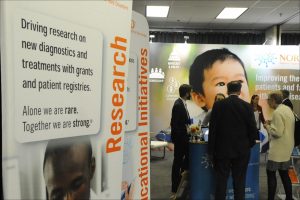Pulmonary hypertension is elevated lung blood pressure - News - Sarasota Herald-Tribune
Pulmonary hypertension is elevated lung blood pressure - News - Sarasota Herald-Tribune |
- Pulmonary hypertension is elevated lung blood pressure - News - Sarasota Herald-Tribune
- Riociguat fails to improve pneumonia-associated pulmonary hypertension: RISE-IIP - Healio
- Selexipag Functionally Improves Pulmonary Hypertension Patients with COPD - MD Magazine
- NORD 2019 Rare Disease Summit Set for Oct. 21-22 in Washington, DC - Pulmonary Hypertension News
- Clinical phenotypes and outcomes of precapillary pulmonary hypertension of sickle cell disease - MD Linx
| Pulmonary hypertension is elevated lung blood pressure - News - Sarasota Herald-Tribune Posted: 09 Sep 2019 12:00 AM PDT Dear Dr. Roach: I read an article about a study the Mayo Clinic did using 20 mg tablets of sildenafil for pulmonary arterial hypertension and that it improved walking distance by 75%. Is there an upper age limit for a person using this medication for pulmonary hypertension? — D.L. Dear D.L.: Pulmonary hypertension is different from regular or systemic high blood pressure. It's not the kind that is measured with a blood pressure cuff. In pulmonary hypertension, the elevated pressures are inside the lungs. There are five general classes of pulmonary hypertension, and people must undergo extensive diagnostic testing to determine which subclass they have. The goal is to find a cause that has a specific treatment. For example, subclass 2 is pulmonary hypertension due to heart disease of the left side of the heart, such as heart failure or valvular heart disease. Treating those can make the pulmonary hypertension better. However, many people do not have a treatable underlying cause that can be identified, so doctors rely on general treatments to improve symptoms. One such is sildenafil, which is called Revatio when used for pulmonary hypertension, but it is the same drug as Viagra. It prolongs the effect of nitric oxide, a chemical in the blood that relaxes blood vessels in the lungs and reduces pressure. Sildenafil, like other drugs in the same class, significantly improved the distance a person could walk in six minutes. The 75% increase you noted is higher than most studies showed, however. The study included subjects up to 81 years old. I do not think age alone would be a reason not to use these kinds of medications. These medicines should not be used in people taking nitrates (such as nitroglycerine) or those with very low systemic blood pressure. Dear Dr. Roach: I've been taking an ACE inhibitor and a calcium channel blocker for the past four months for high blood pressure as advised by my cardiologist. In my blood test a month ago, my vitamin D level was at 16. I'm also taking weekly vitamin B12 as advised by my neurologist. Can I take vitamin D2 (50,000 IU) as a weekly dose for six weeks to overcome vitamin D deficiency, or would it interfere with blood calcium balance? — B.S. Dear B.S.: Vitamin D will not interfere with the action of your ACE inhibitor or calcium channel blocker. Vitamin D usually has a very small (if any) effect on blood calcium levels, as these are tightly regulated through multiple means, especially the parathyroid hormone level and the kidneys. I see many people who are given a six-week course of high-dose vitamin D2, such as the 50,000 units weekly for six weeks you were prescribed. I do not prescribe it that way, since many people wrongly feel that this will "cure" their low vitamin D, and they stop monitoring it after the course of treatment. Many people have inadequate vitamin D levels, and although there is some disagreement about what levels need to be treated, yours is in the range where everyone agrees treatment is necessary. For those who need it, ongoing supplementation of vitamin D is necessary, whether through pills, diet or sun exposure. For most people with a level as low as yours, oral supplementation is by far the most effective and safest treatment. I prefer 1,000-2,000 IU of vitamin D3 daily as a starting point for supplementation in most. Readers may email questions to ToYourGoodHealth@med.cornell.edu. |
| Riociguat fails to improve pneumonia-associated pulmonary hypertension: RISE-IIP - Healio Posted: 12 Sep 2019 07:11 AM PDT [unable to retrieve full-text content]Riociguat fails to improve pneumonia-associated pulmonary hypertension: RISE-IIP Healio |
| Selexipag Functionally Improves Pulmonary Hypertension Patients with COPD - MD Magazine Posted: 15 Sep 2019 06:34 AM PDT  Selexipag could improve functional status associated with chronic obstructive pulmonary disease (COPD) among patients with pulmonary hypertension (PH), according to findings from a new study. Selexipag could improve functional status associated with chronic obstructive pulmonary disease (COPD) among patients with pulmonary hypertension (PH), according to findings from a new study.In trial data presented at the Heart Failure Society of America (HFSA) 2019 Scientific Session in Philadelphia, PA, a team of investigators from the University of Nebraska Medical Center reported findings showing the prostacyclin-targeting therapy benefits comorbid COPD in patients with out-of-proportion PH. Led by Sherif TH Abuserewa, MD, the team sought the benefit of selexipag in patients who make up less than 5% of the PH population. Out-of-proportion PH is associated with an "intrinsic pulmonary vascular pathology," they noted—one different from the mild PH which affects a majority of patients with COPD (mean pulmonary artery pressure [mPAP] <35 mmHg). "Pulmonary hypertension in patients with COPD is associated with an increase in the risk of COPD exacerbation, increased hospitalization, and worse survival in this patient population," they wrote. Investigators reviewed the medical records of 6 patients with COPD who were initiated on selexipag for out-of-proportion PH. All patients were subjected to a right heart catheterization at baseline to indicate mPAP ≥35 mmHg at rest. The six-minute walk test was conducted for each patient at baseline, then repeated at 6 months. Mean resting mPAP at baseline was 43 mmHg; average patient age was 72 years, and patients averaged 47 cigarette packs annually. Five of the 6 patients improved their six-minute walk distance from baseline, by a mean score of 169 feet (512 to 681). The lone patient to worsen their six-minute walking test had worsened their distance by 264 feet—from 1177 at baseline, to 913 at 6 months. Interestingly, this patient had scored significantly higher than the rest of the population on their baseline score. Though the findings are in need for a larger-size prospective assessment, investigators concluded the case series indicated selexipag was associated with improved functional status at 6 months for patients with out-of-proportion PH. Selexipag is among a small number of therapies to have been designated for PH care since the 1990s. Though its benefit as an arterial-pathway targeting drug has made it a great benefit to patients who are especially treated early into diagnosis, clinicians have expressed concerns with controlling comorbidities pharmacologically within PH. In an interview with MD Magazine®, Gary Palmer, MD, MBA, Vice President of Medical Affairs for Actelion Pharmaceuticals and Victor Tapson, MD, Director of the Venous Thromboembolism & Pulmonary Vascular Disease Research Program at the Cedars-Sinai Medical Center, indicated that comorbidity control is, in fact, a viable gauge on PH control. "If somebody has asthma, COPD, other kinds of problems, if it's a major lung or cardiac problem, we have to determine if it just overlaps a little bit with this PAH, or if it's the cause," Tapson said. "And if it's not the cause or is the cause, we have to make sure we treat that disease and keep it under control." The study, "Role of Selexipag in COPD Patients with Out Of Proportion Pulmonary Hypertension," was presented at HFSA 2019. |
| NORD 2019 Rare Disease Summit Set for Oct. 21-22 in Washington, DC - Pulmonary Hypertension News Posted: 27 Sep 2019 05:00 AM PDT Next month's annual conference of the National Organization for Rare Disorders (NORD) in Washington, D.C., couldn't come at a better time, says Marshall Summar, MD, chairman of NORD's board of directors. "The pace of discovery in rare diseases has gone from brisk to hypersonic," Summar told BioNews Services, publisher of this website, by phone from the District of Columbia.  "With all the new DNA modification therapies, small molecules, gene therapies, and acceleration in the diagnosis of rare diseases — we're adding new ones weekly — this is the most exciting time to be in the field, but also the most dizzying," said Summar, who's also director of the Rare Disease Institute at Children's National Medical Center. "So keeping up with it all requires a lot of attention." At least 800 people are expected to attend the 2019 NORD Rare Diseases & Orphan Products Breakthrough Summit, set for Oct. 21-22 at Washington's Marriott Wardman Park Hotel. The event, whose theme is "The Time is Now," features a keynote speech by Ned Sharpless, MD, acting commissioner of the U.S. Food and Drug Administration (FDA). Also scheduled to speak are the directors of three key FDA divisions: the Center for Drug Evaluation and Research (CDER), the Center for Biologics Evaluation and Research (CBER), and the Center for Devices and Radiological Health (CDRH). Other speakers on the agenda include: former FDA Commissioner Scott Gottlieb, MD, now with the American Enterprise Institute; Steven Pearson, MD, founder and president of the Institute for Clinical and Economic Review (ICER); Brad Wong, president and CEO of the Pulmonary Hypertension Association, and Dawn Rotellini, senior vice-president at the National Hemophilia Foundation.  In addition, the agenda includes speakers from the National Institutes of Health (NIH), patient advocacy groups, industry, and academia. There's also an expansive poster session, one-to-one networking opportunities, and nine breakthrough topic sessions over two days. These sessions cover topics such as gene therapy, newborn screening, curative therapies for rare cancers, investment opportunities in orphan products, social media platforms for organizing patients, and patient registries and natural history studies. "It's clear that now is the time for driving innovation, advocacy, research and new therapies," said Peter L. Saltonstall, NORD's president and CEO. "This year we'll be taking on timely topics such as the challenges of gene therapy, retaining treatment affordability while sustaining innovation, and fostering dialogue among payers, providers, and patients." Two women who not only became patient advocates themselves, but went on to acquire the education and skills necessary to advance research on rare diseases, also will speak, as part of a patient/caregiver session titled "There is No Time Like the Present: Inspiration to Action."  Karen Pignet-Aiach is founder and CEO of Lysogene, a Paris-based pharma company focused on rare neurogenerative diseases. A financial consultant, Pignet-Aiach changed careers in 2005 after her daughter, Ornella, was diagnosed with Sanfilippo syndrome, an incurable disease. Four years later, she founded Lysogene, which today has a gene therapy in development. Terry Jo Bichell of Nashville was a practicing nurse midwife with a degree in public health — teaching women how to breastfeed and care for their babies — when her own son, Louie, was diagnosed with Angelman syndrome. Ultimately, Terry Jo went back to school at Vanderbilt University, earning a PhD in neuroscience from the university's Brain Institute. She's also the Tennessee volunteer ambassador for NORD's Rare Action Network. NORD, founded in 1983, speaks for nearly 300 patient advocacy groups, from the Alport Syndrome Foundation and the Cystic Fibrosis Foundation to the XLH Network, which represents patients with X-linked hypophosphatemia. Among the participants at last year's NORD Summit, 40% represented patient advocacy groups; 30% were from the pharmaceutical industry; 15% worked on consulting; 5% were government officials; another 5% were in research or academia; 3% were healthcare providers or investors; and 2% were journalists. Sponsors of the NORD's 2019 summit include Sanofi Genzyme, Eversana, Retrophin, and Takeda. For a complete listing of the more than 95 speakers, panel discussions, lunch and learn groups, and more, download the agenda. To register for the summit, click here; information about exhibiting and corporate sponsorship opportunities can be found here. × |
| Posted: 26 Sep 2019 04:21 AM PDT [unable to retrieve full-text content]Clinical phenotypes and outcomes of precapillary pulmonary hypertension of sickle cell disease MD Linx |
| You are subscribed to email updates from "pulmonary hypertension causes" - Google News. To stop receiving these emails, you may unsubscribe now. | Email delivery powered by Google |
| Google, 1600 Amphitheatre Parkway, Mountain View, CA 94043, United States | |
Comments
Post a Comment